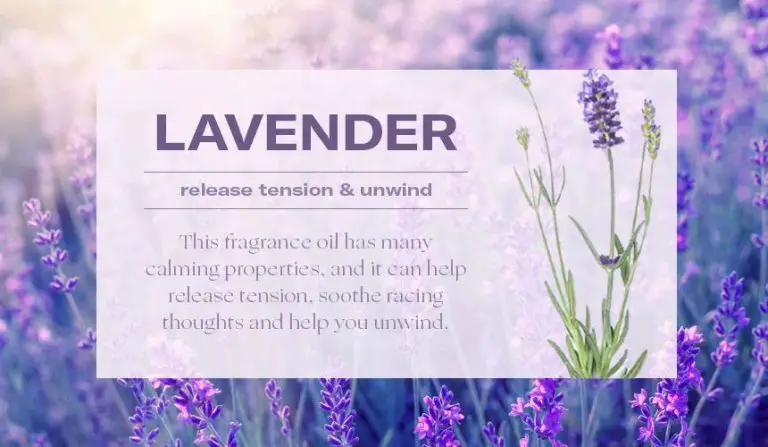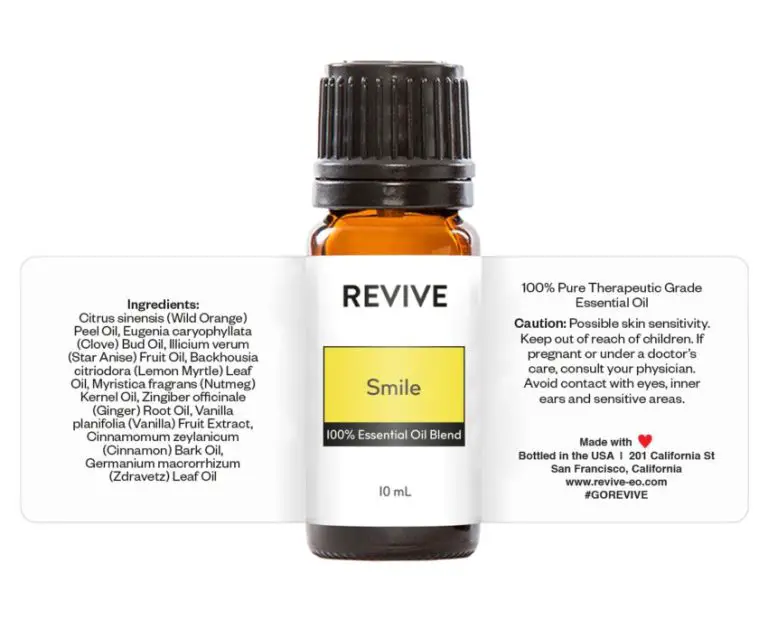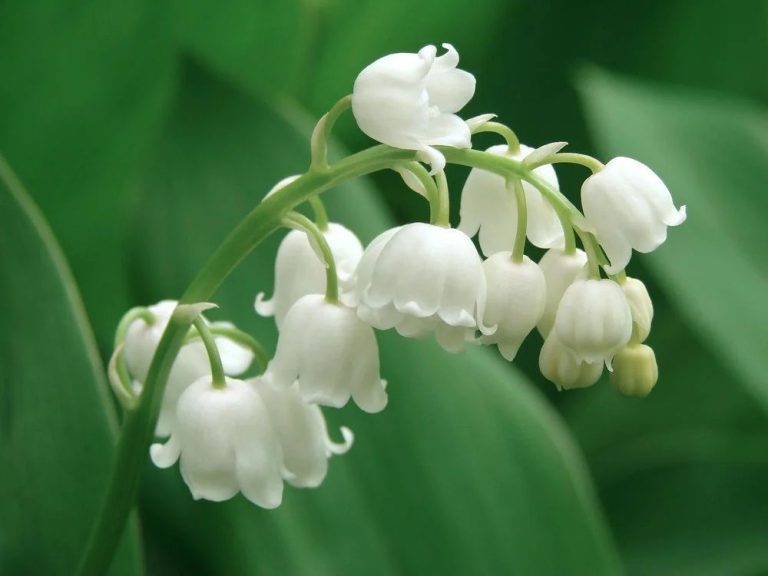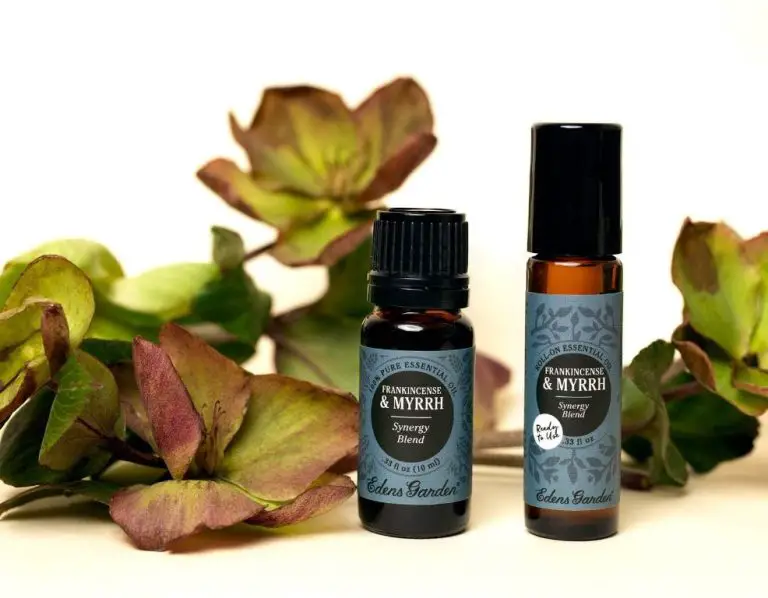How Do You Make Homemade Fragrance At Home?
Making homemade fragrances has become an increasingly popular hobby in recent years. There are several reasons why more people are choosing to make their own fragrances at home:
Overview of homemade fragrances:
- Allows for creativity and customization – you can experiment with different scent combinations and make fragrances that are personalized to your tastes.
- Often uses more natural ingredients than store-bought perfumes.
- Can be much less expensive than purchasing ready-made fragrances.
- Gives you control over the ingredients and lets you avoid certain chemicals.
- Fun DIY project for those who enjoy crafting.
Reasons to make your own:
- Make signature scents or replicate favorite discontinued fragrances.
- Control the strength and longevity of the fragrance.
- Use natural, organic, or ethically-sourced ingredients.
- Avoid synthetic chemicals, dyes, and preservatives.
- Save money compared to designer brand perfumes.
- Express creativity by blending scents in unique ways.
Ingredients
Many homemade fragrances start with essential oils like lavender, rose, jasmine, neroli, and citrus oils which provide fragrance notes. Carrier oils like jojoba, coconut, or almond oil help dilute and extend the scent. Other common ingredients include absolutes like rose or jasmine which are highly concentrated scent extracts, as well as fragrance molecules like linalool, limonene, and lilial which provide specific fragrance notes.
It’s important to note that some common fragrance ingredients have been linked to health issues. Phthalates used in synthetic fragrances can disrupt hormones and cause reproductive issues (source). Allergens like linalool and limonene irritate skin, eyes, and airways in sensitive individuals (source). When making homemade fragrance, it’s best to avoid harmful synthetic ingredients and stick to natural essential oils.
Equipment
Making homemade fragrances requires some basic equipment and supplies. Here are some of the key items you’ll need:
Beakers and Erlenmeyer flasks – These glass containers allow you to properly measure and mix ingredients. You’ll need a variety of sizes from 50ml up to 500ml.
Graduated pipettes and droppers – Pipettes allow you to accurately measure small amounts of essential oils and fragrance components in drops or milliliters. Glass droppers work for larger pours.
Mixing containers – Stainless steel or glass bowls or containers are ideal for blending multiple ingredients by hand.
Funnels – Funnels make it easy to pour mixtures into bottles without spilling.
Perfume bottles – You’ll need small glass bottles to store and package your homemade fragrances. Dark colored bottles help preserve the scent.
Labels – Create your own brand by designing and printing custom labels for your fragrance bottles.
Cotton swabs – These are handy for testing and sampling fragrances.
Coffee filters – Use these to strain mixtures and separate oils from alcohol or water.
Measuring tools – Measuring cups and spoons will help you accurately blend your fragrances.
Safety gloves and goggles are also recommended when handling concentrated essential oils.
With the proper supplies, you’ll be ready to start blending and infusing your own beautiful scents.
Safety
When making homemade fragrances, it’s important to follow safe practices to avoid skin irritation or other health issues. You should always wear gloves and work in a well-ventilated area when handling essential oils, alcohol, and other strong ingredients (Source). Perform a patch test on a small area of skin before trying a new blended fragrance recipe, as some people may be sensitive to certain oils. Start with very diluted test batches at first. It’s also best to avoid getting oils and fragrances in your eyes or accidentally ingesting. Make sure all equipment, ingredients, and final products are properly labeled and stored out of reach of children and pets. Follow all usage instructions for any commercial fragrance components you purchase. With proper precautions, you can safely explore creating homemade fragrances.
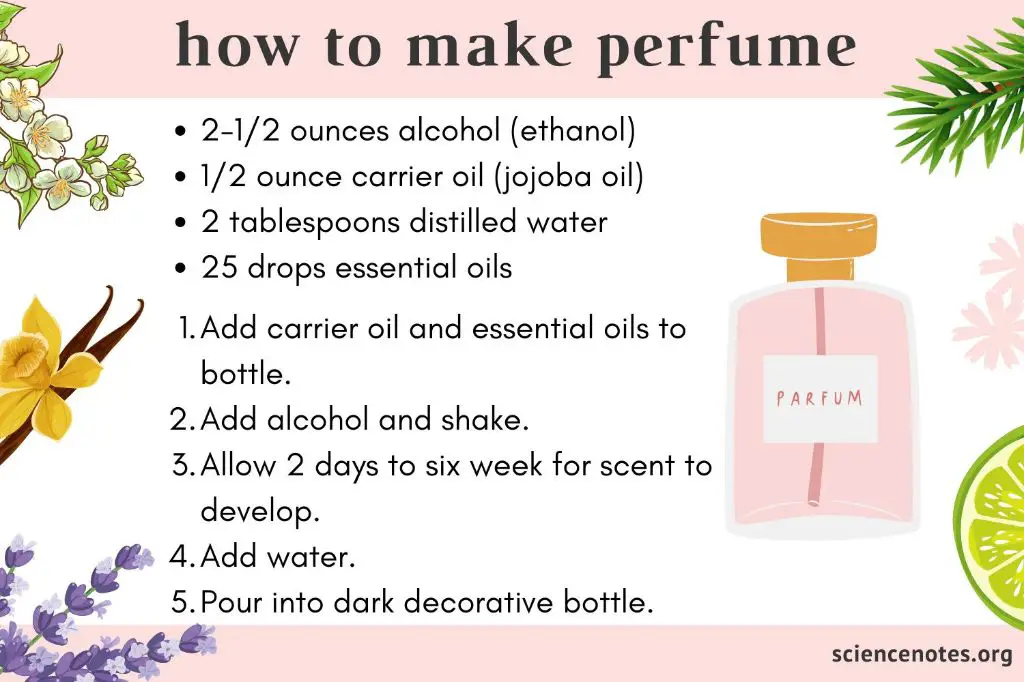
Blending
Blending is one of the most important steps in creating a custom fragrance oil. It involves combining individual fragrance oils with complementary or contrasting scents to achieve a unique and balanced final fragrance. There are a few key techniques for blending fragrance oils:
Blending by notes involves choosing fragrances that share similar scent families or notes, like floral, woodsy, citrus, etc. When the notes are harmonious, they blend seamlessly into a cohesive fragrance. For example, you could blend lavender, rose, and jasmine for a floral bouquet.
Blending contrasting notes can add complexity and depth. Think about blending fresh citrus with musky wood notes. The citrus lifts the scent, while the wood provides an earthy base. Just be sure not to overwhelm with too many competing notes.
Keep scent ratios in mind when blending. Strong niche fragrances like sandalwood may need a smaller ratio compared to lighter floral notes. Referencing a fragrance oil blending chart can help determine appropriate percentages.
Allow time to test and tweak your fragrance blends before finalizing. Keep detailed notes on how oils interact and make adjustments to achieve the perfect, balanced custom scent.
Maceration
Maceration is one of the oldest and simplest methods for capturing fragrance from botanicals. It involves infusing carrier oils like jojoba, coconut, or olive oil with fragrant plant materials like flowers, leaves, spices, woods, and resins to extract their aromatic compounds.1
To macerate, place the plant materials in a sterilized glass jar and cover them with a carrier oil. Make sure all plant matter is fully submerged. Tightly seal the jar and place it in a cool, dark place for 2-6 weeks, gently shaking or turning the jar daily. The carrier oil will slowly extract the fragrant essential oils from the plant material through diffusion.
Once the maceration is complete, carefully strain the oil through cheesecloth to remove all botanical material. The resulting “enfleurage” is a beautifully perfumed oil ready for use! Adjust the scent with additional botanicals or essential oils. And since maceration uses no heat, the fragrance retains a truer, fresher aroma.
Enfleurage
Enfleurage is a process of extracting fragrant oils from delicate plant materials like flowers, leaves, and barks into odorless fats or waxes. It involves placing the plant material on one side of glass sheets coated with grease/wax and leaving it to infuse for a period of time. The fragrant oils from the plant material are absorbed into the fat or wax over the days. The fatty oils are then extracted using ethanol, and the resulting fragrant oil is known as a concrete. Some commonly used fats and waxes for enfleurage include animal fats like lard or tallow, vegetable oils like coconut or palm oil, and beeswax.
The enfleurage process is done in stages using a frame known as a chassis. The fragile petals and flowers like jasmine, tuberose, violet, and rose need to be replaced with fresh ones periodically as they wilt. The spent flowers are removed, and fresh petals take their place. This process of replacing the flowers can be repeated for weeks or months to concentrate the fragrance. According to sources, “The enfleurage process is repeated with new flowers until the grease has absorbed as much of the flower scent as possible.” (https://www.savvyhomemade.com/enfleurage/)
There are two enfleurage techniques – cold enfleurage and hot enfleurage. In cold enfleurage, the solid fat used is kept at room temperature. For hot enfleurage, the fat is gently warmed or even melted to aid in better absorption of the fragrant oils. Enfleurage is one of the oldest and most labor-intensive ways of natural fragrance extraction. It results in delicate fragrances that capture the true essence of the living flower.
Extraction
There are several methods used to extract fragrance from botanical materials. The most common professional methods include:
-
Distillation: Plant material is placed in a still and heated, causing the volatile aromatic compounds to evaporate. The vapor is condensed and collected as essential oils.
-
Expression: Some plant materials like citrus peels can be pressed to rupture oil glands and collect the fragrant oils. This is done mechanically.
-
Enfleurage: Flowers are placed on trays coated with odorless animal fat or vegetable oils. The fat absorbs the fragrant compounds from the flowers. The fragrant fat is then collected by scraping and rinsing with alcohol to obtain a floral absolute.
Enfleurage is one of the oldest extraction methods, but is inefficient and costly compared to more modern methods like distillation. However, it can capture delicate top notes that may be lost in distillation. (Source)
For highest quality, many modern perfumes use a combination of distillation, expression, and enfleurage depending on the botanical ingredients.
Aging
Allowing your homemade fragrance to age properly is an important step for allowing the perfume to fully develop its scent profile. After blending all the fragrance ingredients, it’s recommended to let the perfume rest for 4-6 weeks before using. This aging process allows the different notes to meld together and the alcohol to oxidize. According to perfume experts, aging is when the true fragrance forms and matures (https://www.pinterest.com/justbar_/colita-de-rana/).
During aging, the top citrus or herbaceous notes will often soften as the heart and base notes become more prominent. You may notice the fragrance smells slightly different after aging compared to when first blended. The various essential oils, absolutes, CO2 extracts, and other ingredients need time to fully integrate. Changes in temperature can also affect the aging process. Aging your homemade perfume allows the different scent layers to marry and provide a richer, longer lasting fragrance.
Bottling
Once your fragrance has aged and matured to your liking, it’s time to decant it into bottles for use. You’ll want to choose an appropriate container for your homemade perfume. Small spray bottles, roll-on bottles, and dropper bottles are common choices. Make sure to wash and sterilize the bottles thoroughly before use.
Carefully pour your fragrance into the bottle using a funnel to avoid spilling. Leave a little headspace at the top of the bottle. Then insert the spray, rollerball, or dropper attachment. Make sure the bottle is sealed tightly to prevent the fragrance from evaporating.
Be sure to label your fragrance bottle with the name of your creation and the date. You may also want to note any special ingredients or accords. Decorative labels, fabric, ribbons, and charms can add a nice handmade touch. Store the fragrance in a cool, dark place away from heat and sunlight to maintain freshness.
Now you can start enjoying your bespoke homemade perfume! The final scent profile will continue to develop over time. Feel free to tweak and refine formulas in future batches as you gain more experience blending fragrance oils and essential oils. With some creativity and patience, you can craft signature scents with your own personalized fragrance story.

